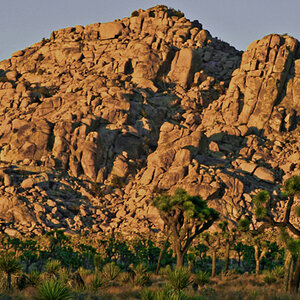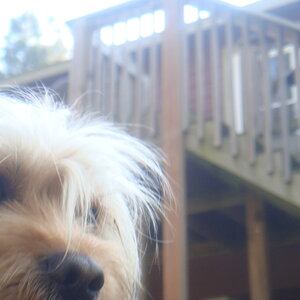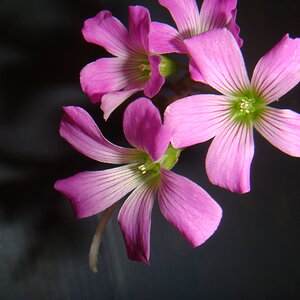Navigation
Install the app
How to install the app on iOS
Follow along with the video below to see how to install our site as a web app on your home screen.

Note: This feature currently requires accessing the site using the built-in Safari browser.
More options
You are using an out of date browser. It may not display this or other websites correctly.
You should upgrade or use an alternative browser.
You should upgrade or use an alternative browser.
Never Seen This Before
- Thread starter Ysarex
- Start date
- Joined
- Mar 18, 2021
- Messages
- 11,349
- Reaction score
- 7,005
- Location
- The Colony, Texas, USA
- Website
- www.flickr.com
- Can others edit my Photos
- Photos NOT OK to edit
Wonderful shot! The squirrel adds some perspective. I'm guessing that an arborist in some time past trained and spliced that one branch.
This child
No longer a newbie, moving up!
Thanks for pointing out the squirrel. I didn't notice it the first time I looked at the photoWonderful shot! The squirrel adds some perspective. I'm guessing that an arborist in some time past trained and spliced that one branch.
Jeff15
Photographizing junkie!
- Joined
- Mar 29, 2018
- Messages
- 23,270
- Reaction score
- 12,128
- Location
- Staffordshire England
- Can others edit my Photos
- Photos NOT OK to edit
Seen many odd shapes but not this one.....
Ysarex
Been spending a lot of time on here!
- Joined
- Nov 27, 2011
- Messages
- 7,137
- Reaction score
- 3,687
- Location
- St. Louis
- Can others edit my Photos
- Photos OK to edit
It never occurred to me that someone might have actually done it. I kept trying to imagine how it would have happened naturally and just kept shaking my head. It's located in one of our city parks and we do have a Forestry division that cares for trees. Now the question, why?Wonderful shot! The squirrel adds some perspective. I'm guessing that an arborist in some time past trained and spliced that one branch.
NS: Nikon Shooter
Been spending a lot of time on here!
- Joined
- Aug 11, 2021
- Messages
- 2,899
- Reaction score
- 2,832
- Can others edit my Photos
- Photos OK to edit
-
Indeed… a first for me too!
Indeed… a first for me too!
- Joined
- Mar 18, 2021
- Messages
- 11,349
- Reaction score
- 7,005
- Location
- The Colony, Texas, USA
- Website
- www.flickr.com
- Can others edit my Photos
- Photos NOT OK to edit
If you look at the upper connect, it is too flat to be natural, and suggests that it was cut. From the size of the trunk, it looks like it was probably done a long time ago when the trunk or branch would have been much more supple. They most likely cut off one branch, and the end of another, and then carefully bent it around to meet the other branch, and then wrapped it in place to heal. Tree shaping is an artform in its own right.It never occurred to me that someone might have actually done it. I kept trying to imagine how it would have happened naturally and just kept shaking my head. It's located in one of our city parks and we do have a Forestry division that cares for trees. Now the question, why?
Ysarex
Been spending a lot of time on here!
- Joined
- Nov 27, 2011
- Messages
- 7,137
- Reaction score
- 3,687
- Location
- St. Louis
- Can others edit my Photos
- Photos OK to edit
Sounds plausible -- I'll buy it. Sure looks odd now though.If you look at the upper connect, it is too flat to be natural, and suggests that it was cut. From the size of the trunk, it looks like it was probably done a long time ago when the trunk or branch would have been much more supple. They most likely cut off one branch, and the end of another, and then carefully bent it around to meet the other branch, and then wrapped it in place to heal. Tree shaping is an artform in its own right.
K9Kirk
Been spending a lot of time on here!
- Joined
- Feb 15, 2019
- Messages
- 15,342
- Reaction score
- 10,004
- Location
- Central Florida (Ruskin area)
- Can others edit my Photos
- Photos NOT OK to edit
Nice and interesting shot. I see two squirrels there.
Most reactions
-
 428
428 -
 292
292 -
 285
285 -
 270
270 -
 221
221 -
 204
204 -
 185
185 -
 179
179 -
 168
168 -
 166
166 -
 148
148 -
 133
133 -
 120
120 -
 95
95 -
I
94
Similar threads
- Replies
- 4
- Views
- 540


![[No title]](/data/xfmg/thumbnail/35/35670-0571a45fff5cc94fc333fb959ce54517.jpg?1619737091)

![[No title]](/data/xfmg/thumbnail/32/32926-ec27ecead8c80d803404500d8f888dbf.jpg?1619735754)
![[No title]](/data/xfmg/thumbnail/38/38262-10a9668da9a2b36a92cddde57caf87bc.jpg?1619738547)





